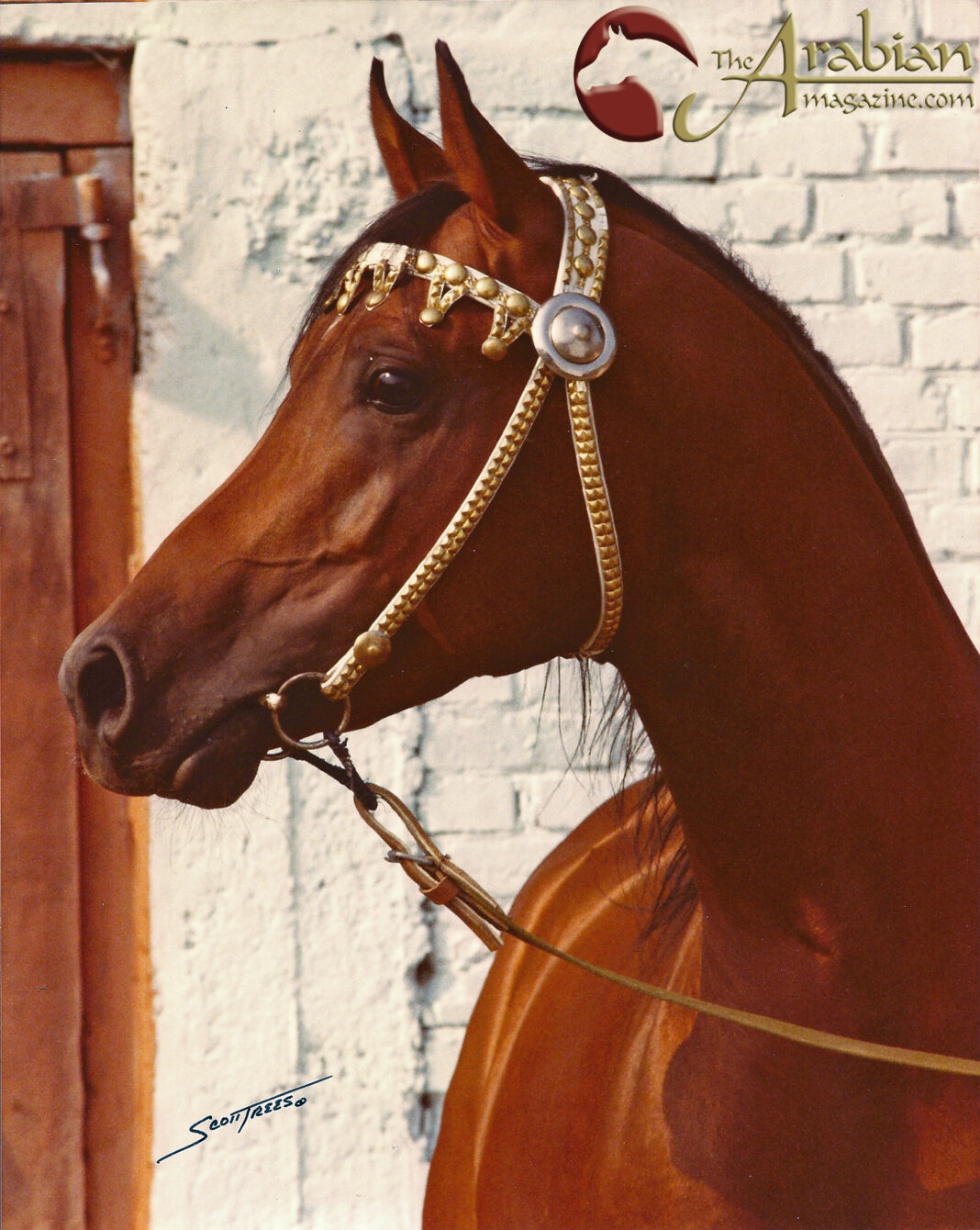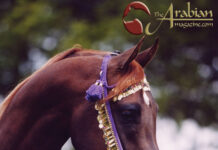Continuing our Throwback Thursday to Arabian icons we have celebrated in the pages of The Arabian Magazine over the years, we celebrate the iconic Russian stallion Menes. Part II will be published next week, although you can enjoy the whole podcast now.
Menes. Say his name in the 21st century and it inspires romantic images of a bay stallion with huge, black eyes, bred in the Soviet Union and responsible for some of the most admired horses of a generation. Even today, Menes in a horse’s pedigree adds that certain something – a sense of mystery from his origins combined with the athletic correctness of this Russian superstar. In this 2011 Crabbet/Russian edition of The Arabian Magazine, we pay tribute to the one and only Menes.
Foaled at the Tersk State Stud in 1977, Menes had a rich pedigree, a blend of primarily Polish lines, taken from the Polish State Studs during the turbulent World War years, mixed in with Crabbet ancestry and Russian-bred parents. His sire was Nebeg by the Polish-bred Arax (Amurath Sahib x Angara by Wielki Szlem out of Brda) and out of the Tersk-bred mare Nomenklatura by Naseem (Skowrenek x Nasra by Daoud out of Nefisa) and out of the legendary mare Mammona (Ofir x Krucica by Farys II out of Dora). Arax was the leading sire at Tersk Stud for 10 years and subsequent generations of sons including Nabeg and Menes, as well as Menes’ most famed son, Balaton, were to fulfil the same role. Menes’ dam was also Tersk-bred, the wonderful Metropolia, again out of Mammona, by Priboj (Piolun x Rissalma by Shareer out of Rissla), adding that Crabbet element into a colourful Russian pedigree.
Menes’ story is inextricably linked with Aries Arabians, owned by Herb Weinstein and his family, including son Michael and daughter Lissa. Founded in the early 1970s, Aries Arabians was built on a foundation of straight Polish and Polish-related mares, each selected by Michael for the farm. One of these mares included Kajora (Kaborr x Edjora by Exelsjor out of Edessa) who would, of course, go on to find fame as the dam of Gazal Al Shaqab (by Anaza El Farid).
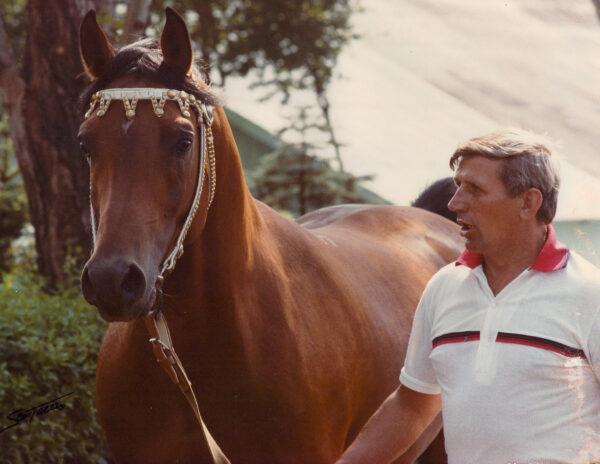
The Weinstein’s were keen to find the perfect stallion to complement their mares and whenever American friends returned from the Tersk State Stud in Russia, they kept talking about this one incredible stallion that was siring amazing foals. The horse in question was Menes, but the directors of the Tersk Stud repeatedly said that he was not for sale. Michael duly investigated Menes, finding out as much as he could about this young stallion; a quick analysis of his pedigree showed that Menes would be ideal for the Aries herd with his classic Polish lines complementing that of their existing mares. With business connections in Russia making their trip through the Iron Curtain easier, Herb and Michael boarded a flight to the Soviet Union, with the ultimate goal being to see Menes in the flesh.
Speaking about that day in 1982, Michael describes how he had built up the moment in his mind, imagining that he could be about to discover another of the great Arabian sires, such as Bask (Witraz x Balalajka) or Aladdinn (Nureddin x Lalage). “When you have waited so long to see such a horse as we had Menes, you inevitably end up having high hopes,” recalls Michael. “So often, once you see the horses in the flesh, the reality is not quite what you hoped that it would be. But when they brought Menes out, wearing the heavy gold show halter that the Tersk Stud reserved for their chief sires, I knew immediately that our search had ended. Menes carried himself like a king – and this was reflected in the eyes of all that saw him.
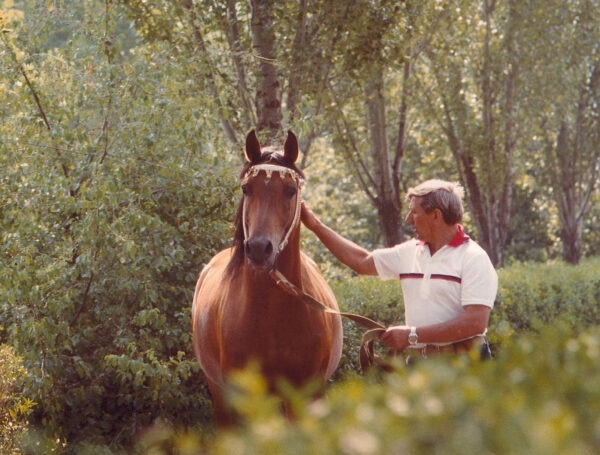
“Menes was very different from the rest of the stallions Tersk had presented to us that day – he was more the kind of horse that you would expect to see in Poland, not the foothills of the Caucasus Mountain range in Russia. Menes was bay, with very little white, and he just took my breath away. He was so beautiful – much more beautiful than I had expected – and so classic.
“The first things I noticed were his large, dark eyes, his short yet masculine head, his overall balance and length of leg, his smooth body with his short back, and his great tail carriage. And most importantly, the youngstock in the two foal crops that Menes had sired at Tersk had the same qualities.”
Michael and his father spent the following days inspecting Menes’ yearlings and weanlings. “They just stood apart from everything else at Tersk,” recalls Michael. “His foals trotted out and it was immediately obvious that they had a great stance, beautifully-arched necks, excellent tail carriages, prominent, expressive eyes, and also finely-shaped ears. As you walked through the paddocks, it was easy to pick out the Menes stock – they just were so different, so much higher in quality to everything else there. We just knew that we had to get Menes to Aries Arabians and so we began negotiations with Soviet officials for a horse that was not for sale.”
However, finding the stallion was one thing – purchasing him and transporting him to the USA was something else entirely. Fidelis International, consisting of the Weinstein’s, Simon Chilewich and Bruce Bowers, was duly formed and over the following 18 months, the Weinstein’s made four trips to Tersk, negotiating constantly to get this young superstar to American soil.
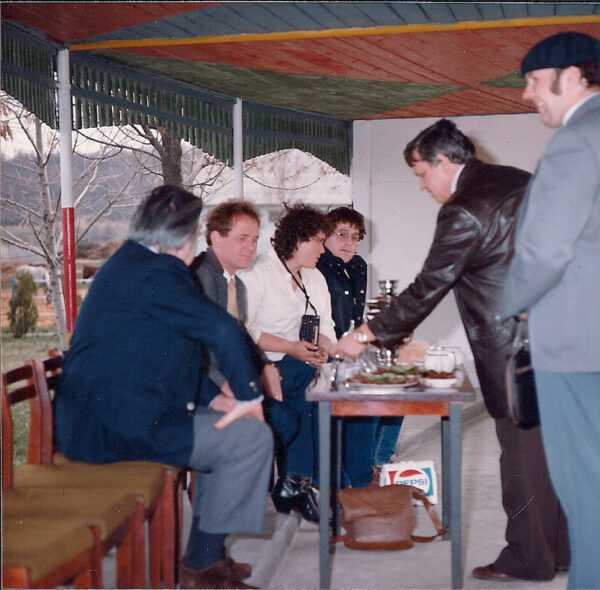
Part of Fidelis International was Cindy Reich, a lady who ended up managing the Aries breeding programme and has since gone on to be globally renowned for her astute knowledge of horses, shared regularly in the show-ring as one of the USA’s top judges. Cindy had already fallen in love with a mare called Motornaia and had spoken to Michael about her. His reply was that Menes was her full brother and, in her own words, Cindy says that her life was, from that moment, intertwined with the stallion for the rest of his life.
Cindy recalls the first trip to Russia to see Menes in April 1983. “Only twice in my life has the hair actually stood up on my neck when I saw a horse, and one of those times was my first glimpse of Menes as he marched down the path from the barn at Tersk to the arena. Led by a small, heavy-set woman in a babushka, Menes acted as if he owned the world. Director Alexander Ponomarev took the lead and stood him up, but I had seen all I needed to see.

“Menes was an enigma in some respects; no picture ever did him justice – he simply didn’t photograph well. He was a great horse, however, with a head and eye that had to be seen to be appreciated.”
Cindy continues, describing the attributes that made Menes so special and why they were so determined to get him to the USA. “He had an incredible length of croup, and length and depth of hip. Square legs, front and rear. Real feet! No club feet or weak pasterns or tied-in below the knee! Here was an athlete that had proven himself on the racetrack and, at the time of importation, he was the leading sire of racing Arabians at Tersk. Menes was a horse that would come to prove himself as a leading sire in the US and Europe in the years to come.”
Fidelis International were determined in their bid to bring Menes to the USA and, looking back, Cindy and Michael describe the experience as a “saga that begs to be told”, highlighting death threats against the horse and tampered blood samples among the many incidents that happened during that 18-month period. “It was the 1980s in the Arabian horse industry and some very big players wanted this horse,” says Cindy simply. “And at any price. If they couldn’t have him, then no one would have him. But in the end, Fidelis won.”
Before Menes could be imported into the USA, he needed to spend time, first, in Holland due to exposure to Piroplasmosis, a parasite that lives in the red blood cells of affected horses. At the time of Menes’ journey from Russia, Holland and Finland were the only countries that would allow horses with Piroplasmosis into the country for treatment and so it was that Cindy found herself at Amsterdam docks, waiting for the boat carrying Menes to arrive.
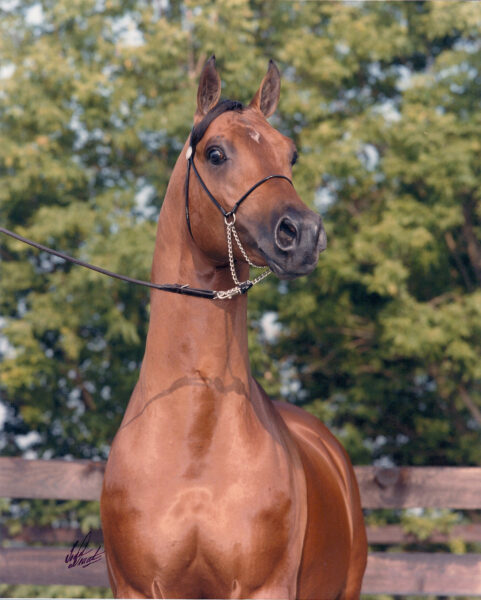
“Fidelis International had also bought two Menes yearlings: Butsefal, a colt named after the horse of Alexander the Great, out of Pesnia, the dam of Pesniar; and a beautiful bay filly out of a full sister to Kilimanjaro, Brittania she recalls. “ In spite of the rough crossing on the boat, Menes carried himself up the ramp in his usual regal pose; over the years, I was to learn that this was his natural bearing.”
Menes and his get went to a small Standardbred farm outside Utrecht for treatment. “The treatment, imidocarb, is a vicious treatment where, essentially, you try to kill the parasite in the blood cells without killing the horse,” explains Cindy. “The reality was, however, that a great many horses from Russia were, in those days, killed from the treatment. It was a dangerous but necessary act that we had to do.”
In spite of being what Cindy describes as “the most sensitive horse I have ever worked with”, Menes stoically tolerated the treatment, which was painful and resulted in a lot of scar tissue forming around where the injections went in. Soon enough, the level of Piroplasmosis in his blood had lowered to an acceptable level and Menes was able to make the next stage of his journey, to his new home in the USA. While Aries Arabians were based in Chicago, as Menes was finally ready to travel in the dead of winter, the decision was made to fly him to Los Angeles where he would stay in the more favourable meteorological environment of Ventura Farms.
Part II will be published next week.


